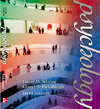|
 |  Psychology, 5/e Lester M. Sdorow,
Arcadia University
Cheryl A. Rickabaugh,
University of Redlands
Intelligence
Learning ObjectivesAfter studying this chapter, you should be able to: - Define autism, savant syndrome, and intelligence.
- Distinguish between and offer examples of achievement tests versus aptitude tests.
- Describe the significant events and individuals in the history of intelligence testing, including discussion on differential psychology and the intelligence quotient.
- Describe the origins of and principles underlying the Simon-Binet/Stanford Binet intelligence tests and then summarize the strengths and weaknesses of this approach to intelligence testing.
- Explain the importance of the deviation IQ, and list and describe three intelligence scales developed by David Wechsler.
- List and describe the three factors that are important in psychological testing.
- List and describe four important and often controversial issues surrounding the validity of intelligence scales mentioning how researchers have attempted to respond to questions of cultural bias.
- Define mental retardation, describe the four levels of retardation and summarize what is presently known about the causes of mental retardation.
- Describe historical and contemporary approaches to educating persons with mental retardation.
- Define mental giftedness and summarize the early twentieth century view of mental giftedness and Terman’s classic study.
- Summarize the contributions of Charles Spearman, Louis Thurstone, and John Horn and Raymond Cattell regarding the nature of intelligence.
- Summarize the important features of Robert Sternberg’s triarchic theory of intelligence, offering examples of each type of intelligence delineated in the theory.
- Describe and offer examples of the various types of intelligence delineated in Howard Gardner’s theory of multiple intelligences, mentioning the recently proposed emotional intelligence.
- Describe how women and immigrants were affected by the emphasis on hereditary explanations of intelligence.
- Summarize the findings of historical and contemporary research regarding the relative contributions of heredity versus environment to intellectual capacity, emphasizing both twin studies and adoption studies.
- Summarize the research findings regarding the impact of intellectual enrichment programs such as Head Start.
|
|
|



 2002 McGraw-Hill Higher Education
2002 McGraw-Hill Higher Education

 2002 McGraw-Hill Higher Education
2002 McGraw-Hill Higher Education